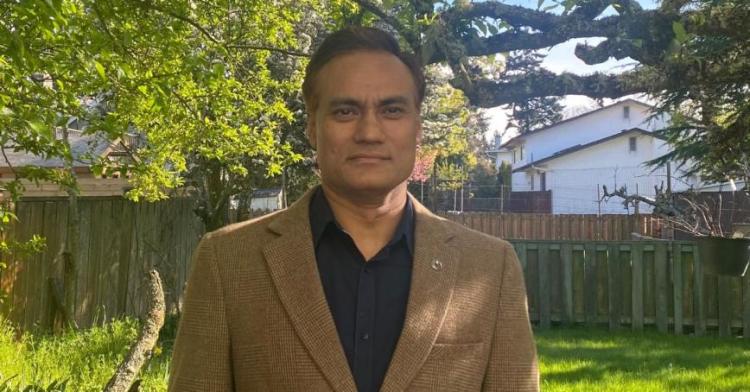As extreme weather incidents become more common and governments plan for climate mitigation strategies, a research team investigated the impact of extreme temperatures on public health.

Lead author Rudra Shrestha, associate faculty in Royal Roads University's School of Environment and Sustainability, and climate scientist in the British Columbia Ministry of Health, along with a team of researchers from BC's Provincial Health Office including Provincial Health Officer Dr. Bonnie Henry co-authored a paper titled: Estimating the impacts of nonoptimal temperatures on mortality: A study in British Columbia, Canada, 2001-2021.
The research focuses on estimating the effects of disasters such as 2021's heat dome, during which more than 600 BC residents died as a result of the extreme heat. But Shrestha notes that the trend has been going in the wrong direction in recent years.
"In BC, out of over 703,000 deaths between 2001 and 2021, approximately 7% were attributable to nonoptimal temperatures, including half a per cent related to extreme heat," says Shrestha. "The trend is rising.
"The findings of this research will be helpful for policy intervention on how to reduce this kind of disaster in the future. But more research needs to be done focusing on the community scale, which is what we are currently focusing on."
With global temperatures rising and projected to continue rising in the future, the number of deaths related to extreme weather events will also continue to rise, he says.
Research and mitigation must also continue, and at the community, rather than provincial, level, he says, noting the differences in what's considered "optimal temperatures" depending on the B.C. health region. For instance, the optimal temperature in Vancouver Coastal Health, which includes the city of Vancouver, is 20.2 C while in the Northern Health region, which serves the northern half of the province, that number is 8.8 C.
Helping protect people when temperatures dip well below or jump well above these acceptable averages requires urgent action, Shrestha says. Such strategies include a number of temporary measures that have been used in some areas heating or cooling centres, for example as well as actions that reflect long-term thinking, such as creating more greenspaces to provide natural cooling, especially in urban areas.
He says more research is ongoing, including work that focuses on the effects of temperature extremes on people of different age groups, and he notes that older people and children are generally more vulnerable.
Learn more about RRU's School of Environment and Sustainability.












